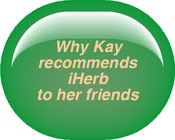 Cooking over an open fire doesn’t mean you have to give up your favorite baked and roasted foods. You might even find that your old favorites are greatly enhanced when cooked in a Dutch oven. When cooking over an open fire, use a Dutch oven with a lipped lid and three feet on the bottom.
Cooking over an open fire doesn’t mean you have to give up your favorite baked and roasted foods. You might even find that your old favorites are greatly enhanced when cooked in a Dutch oven. When cooking over an open fire, use a Dutch oven with a lipped lid and three feet on the bottom.DON’T USE METAL UTENSILS
Don’t use a metal utensil on a properly seasoned cast iron pot or pan. Use wooden utensils as metal will remove the nice coating you’ve worked so hard to put there.
For Dutch oven cooking, use hard wood to build a hot fire at least an hour earlier than your cooking start time. Don’t use ‘soft’ resinous wood or commercial charcoal. Soft, resinous woods (like pine) tend to burn cool and produce a lot of black soot. This is bad for your fireplace and it makes a mess on your cookery – and it’s not so great for the cook, either. Because commercial charcoal is often filled with chemicals and additives that bind them into uniform lumps and increase their flammability, I don’t use them for my cook fire. Learn to build a nice fire with hard wood and you won’t be bothered with either of these. Make sure a good bed of red coals has been laid. Use an oven mitt or cloth to protect your hands as well as a curved iron tool to lift the lid from your pot.
PRE-HEAT YOUR DUTCH OVEN
If needed, wipe the inside of your pot (including the lid) with a paper towel and olive oil. While you prepare your ingredients, place the lid on your Dutch oven and set it near the fire to warm. This is similar to pre-heating your standard oven. Pre-heating your pot will allow the oil to penetrate as the iron warms and allows the food to properly cook. The lid keeps ashes from flying into the pot. If your recipe calls for peppers, onions, or carrots, I add them to the oven at this point to simmer a bit and to provide a cushion between the bottom of the pot and the rest of my ingredients.

ADDING THE FOOD
Prepare your ingredients to be added to the pot. Don’t forget your seasonings. Move your heated Dutch oven a comfortable distance from your fire. Use a curved piece of metal to remove the hot lid.
Add layers of your other ingredients. If you are cooking rice, this is when you would add your water/broth and the rice. Add any additional vegetables. The last ingredient I add is my meat as the juices from the meat will help season the vegetables/rice/potatoes beneath it. Be mindful of the depth of your pot at this point as you don’t want your food to touch the underside of your pot’s lid. If you are baking bread or a desert, place the batter/dough/ingredients into the pot just as you would before placing it into a regular kitchen oven. Replace the lid.
Use a shovel to move some hot coals to the edge of the fire into a small pile. I find that this makes things much more manageable than trying to place the Dutch oven into the fire. Set your Dutch oven on onto this small bed of coals and then begin to shovel hot coals onto the pot’s lid. Once you’ve evenly covered the lid with hot coals, and made sure there is a good bed beneath, shovel a bit of ash over the live coals. This is called banking your fire. It allows the coals to retain their heat as they burn slowly because they aren’t exposed to too much oxygen.
Allow your food to cook about the same time as you would in a conventional oven (assuming you have a good bed of coals), possibly 10 minutes more. Use your shovel to remove the live coals from the top when finished. A whisk broom can remove any ash dust. Using a pad, lift the pot by the handle, protecting your hand from the heat. Move the vessel off of the live coals and set it away from the fire. Lift the lid with a sturdy piece of curved metal and set it to the side. Check your food. If done, serve with a wooden serving spoon. If not, replace the lid, return the pot to the small bed of coals it sat on previously, replacing more coals onto the lid. Wait a few more minutes and check again.
If your first try results in a bit of burned crust, that’s fine. You will soon get the hang of it. The wonderful aroma of hot food will soon silence the critics that will gladly eat around the burnt edges. There aren’t often leftovers. They are ready to eat!
CLEAN UP & STORAGE
For cleanup, gently remove any food residue from the pot with a soft sided scrub pad or wooden spoon. Eventually, you’ll likely find that a clean towel will easily do the job. If there is baked on residue, simply set the emptied pot next to your fire again and allow the remaining bits to cook to ash. Never put your Dutch oven through a dishwasher or immerse it in soapy water. This will strip it of its protective seasoning. Simply wipe the pan and recoat it with oil. You should be able to see your reflection in the bottom of your Dutch oven. Replace the lid for storage.

>>--->WANT TO LEARN MORE?<---<<
Learn about HARD CORE survival in the wilderness with PRIMITIVE WILDERNESS SKILLS, APPLIED. This DVD is offered by the Bulk Herb Store and would make a GREAT gift for the survival skills enthusiast in your life. Additionally, the new best-selling book by Debi Pearl – THE VISION – offers a wealth of information on herbal medicine. Why not combine the two and purchase THE VISION during the upcoming Barnes & Noble Blitz November 3rd & 4th? If you purchase THE VISION on those dates from Barnes & Noble, you’ll receive free gifts and 25% off coupon off of ANY product offered by The Bulk Herb Store. That means you could get PRIMITIVE WILDERNESS SKILLS, APPLIED at a deep discount! Additionally, you’ll be able to shop at five other vendors with that same discount. Just purchase THE VISION on November 3rd or 4th from Barnes & Noble, email melcohen@hughes.net your receipt (showing the date of purchase) and you’ll get all the details. Plan now to save when you buy THE VISION from Barnes & Noble, November 3rd or 4th -- NEXT WEEK!The following video is a demonstration of bread-making using a Dutch oven. While the footage shows use in a conventional oven, the technique is the same -- except for the fact that you'd be using fire as your heat source as described above:








No comments:
Post a Comment